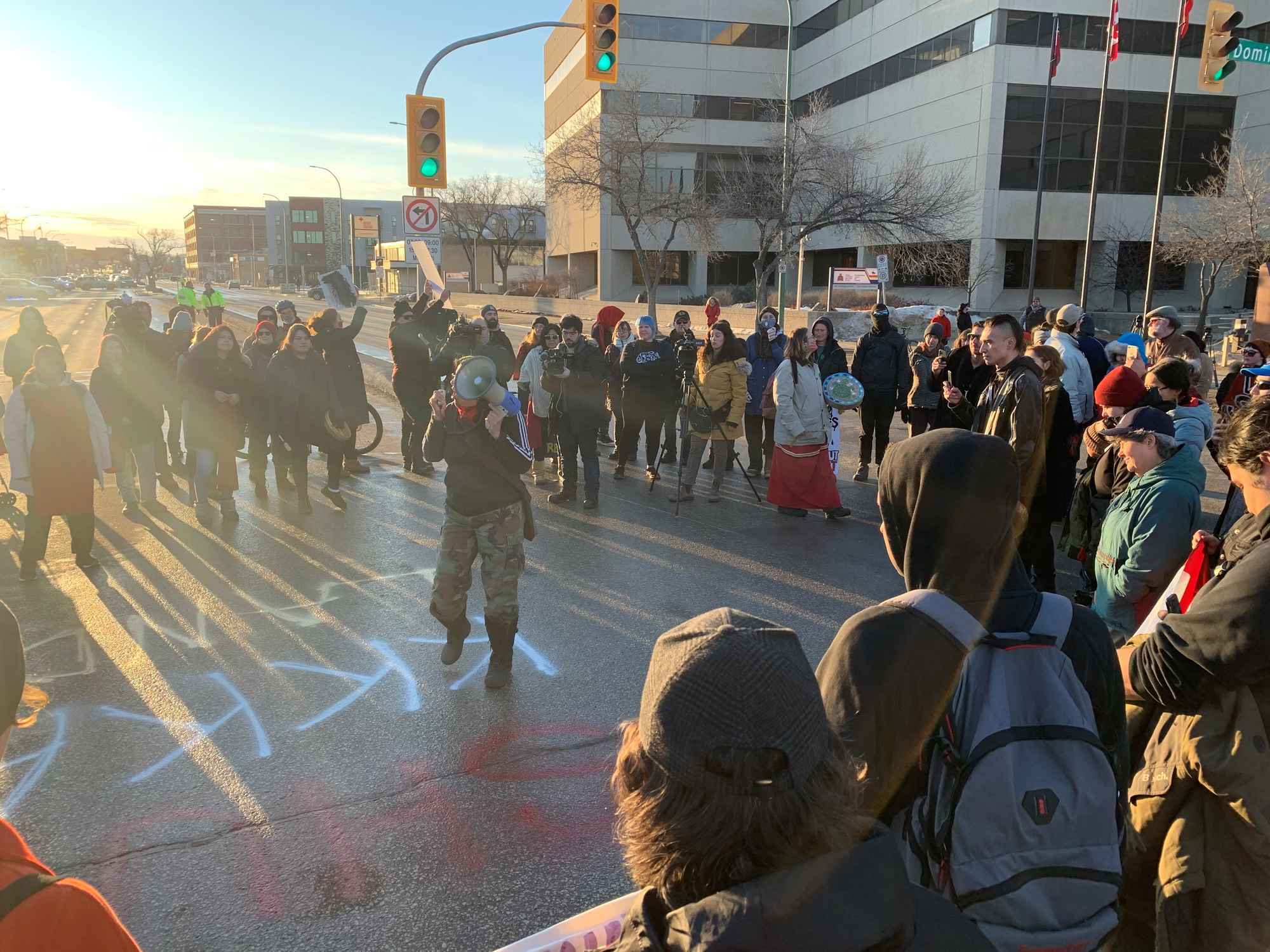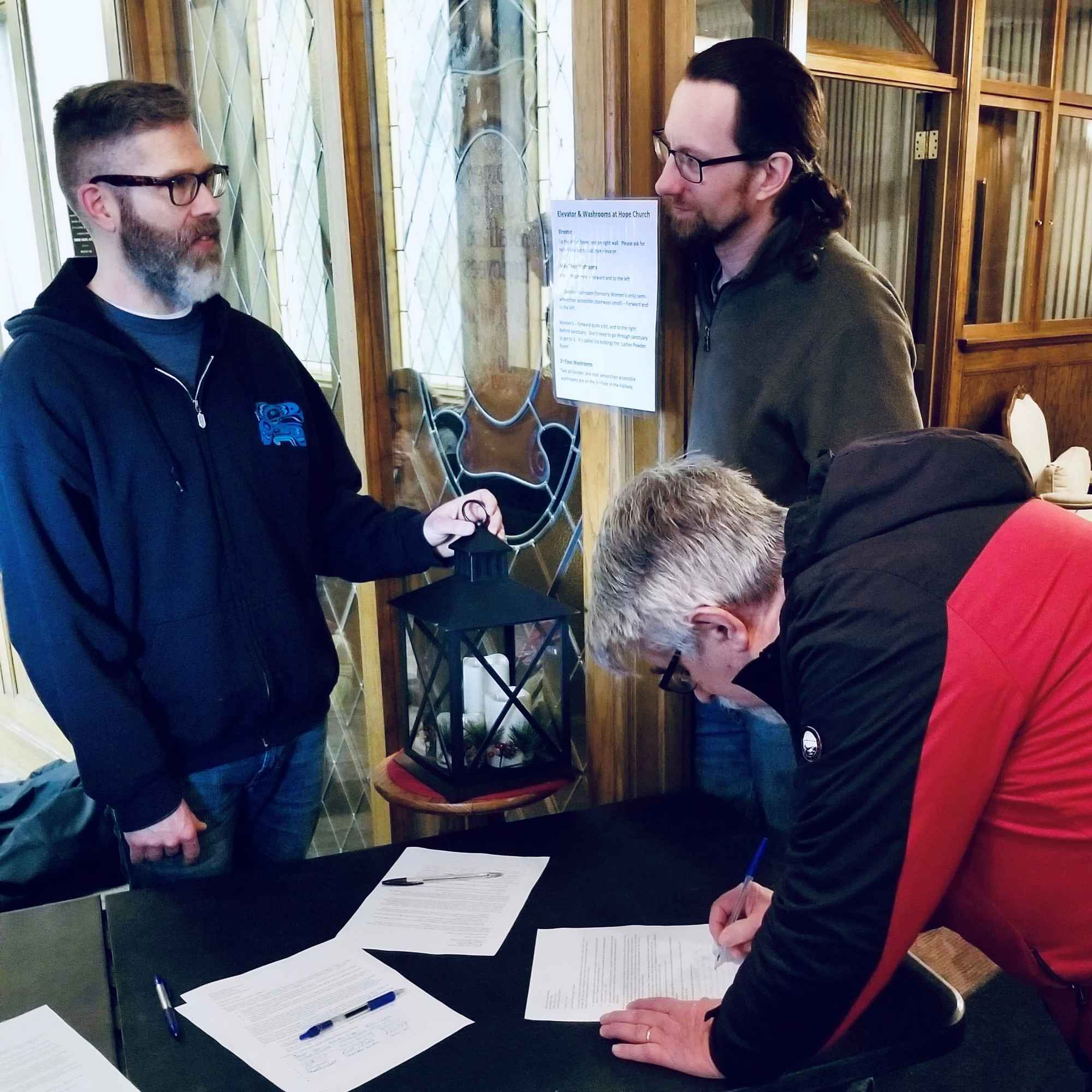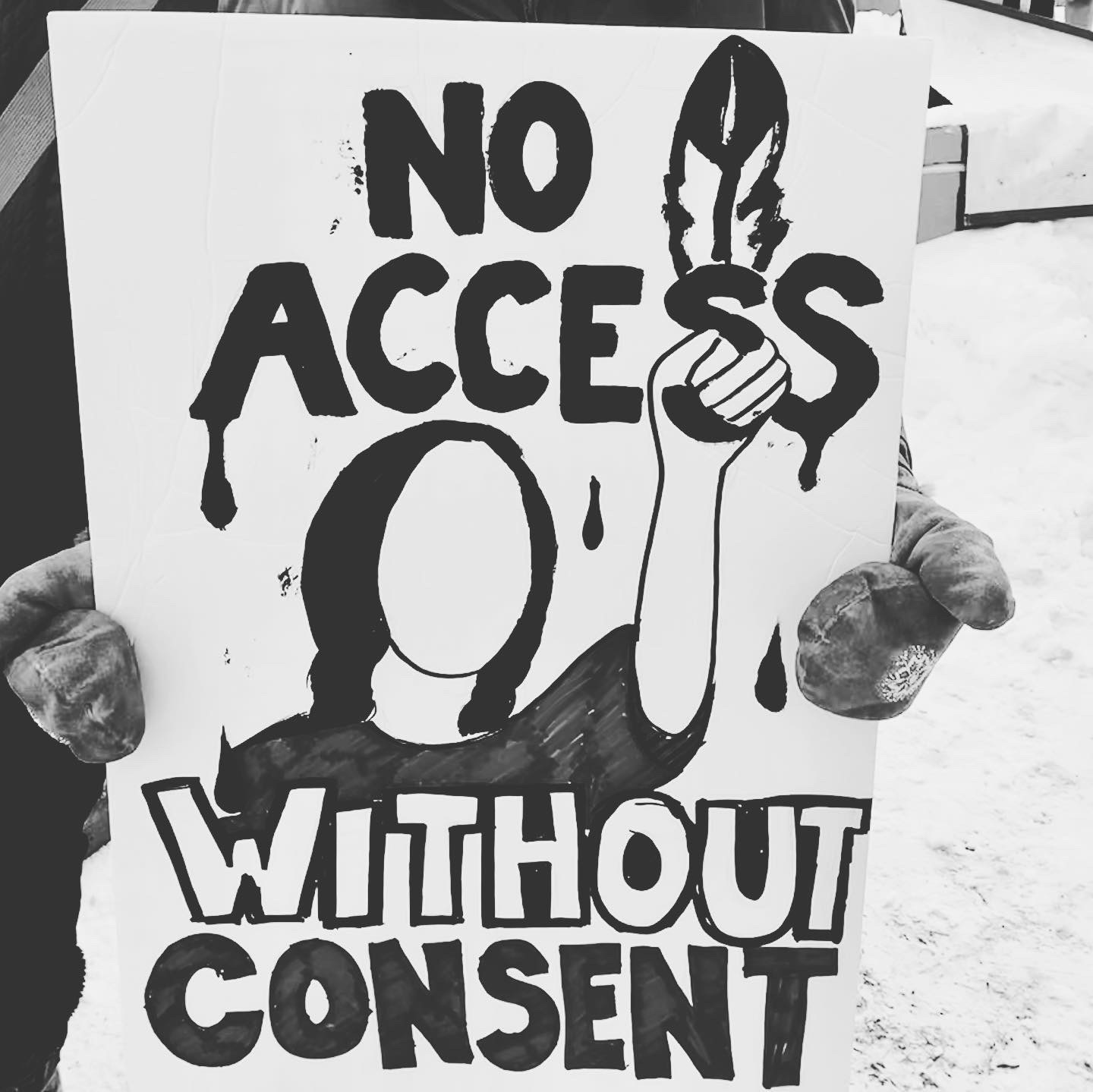May 19th, 2020After Wet’suwet’en: Re-membering the Church’s “Future Directions”
by Steve Heinrichs
Anishinaabe medicine people prophesied long ago that after seven historical phases (“fires”), including colonization and its devastating consequences, a “New People” (Oshkimaadiziig) would arise and revive their traditions. They would come to “a fork in the road” where they would have to choose between the current path of materialism, greed, and competition…or an alternative spiritual path of working together to find new ways of living that restore balance to both social relations and the ecosystems on which we depend. If we choose correctly, an eighth fire will be lit, heralding a new era of peace, justice, and harmony. Many Anishinaabe believe that Canada is now at the crossroads.
—Jeff Denis, Canada at the Crossroads
I was in Wet’suwet’en territory when COVID-19 social-distancing protocols were implemented across Canada. For two weeks I served as a legal observer with Christian Peacemaker Teams. I took vacation time to leave my family in Winnipeg in order to join Gidimt’en clan members and land defenders out on their Yintah (ancestral homeland). I wanted to support their nonviolent struggle for the recognition of their jurisdiction in the face of a government determined to build a fracked-gas pipeline on their territory, at the cost of Indigenous peoples’ full consent and Earth Mother’s well-being.
I also went to Wet’suwet’en to form relationships with the people and the land, relationships that could speak into and inform my work with Mennonite Church Canada. I wanted to reflect on the formal commitments made by our ancestors in the Conference of Mennonites, commitments from 1977, 1987, 1993 and 1997, and 2007[1] that publicly support the self-determination of Indigenous peoples, their struggle for land justice and their authority over unceded territories. They are promises we’ve largely forgotten.

Back in January and February 2020, Canadians watched many Wet’suwet’en solidarity actions take place in southern Ontario and P.E.I., and in the cities of Winnipeg, Victoria and elsewhere. It was an incredible, Indigenous-led witness supported by many non-Indigenous peoples. The actions were remarkably effective. Resistance to the State’s violent dealings[2] with the Wet’suwet’en caused such significant problems for the Canadian economy that the federal government could not refuse title and land-rights talks any longer. The Crown finally sat down at table with hereditary chiefs in early March, a table at which they should have sat some 23 years ago. On May 14, the chiefs and Crown signed an historic agreement regarding Wet’suwet’en rights and title.[3]
Power and the suffering of resistance
In 1997, the Supreme Court of Canada (SCC) ruled that the Wet’suwet’en and Gitxsan claim to Aboriginal title had not been extinguished. The SCC called on the hereditary chiefs—those who steward the territories—and the Crown “to enter good faith negotiations.” The Crown refused because it was in its interest —and that of resource corporations—to do so. It could refuse because it had the power to do so.
I believe this recent Indigenous-State conflict —like those other not-so-long-ago land conflicts of Ipperwash, Oka, Burnt Church, and Gustafsen Lake—has a lot to teach church bodies as we seek right relationship with Indigenous peoples. We in the church centre education and relationship-building as the primary pathways to reconciliation and justice (if we, in fact, talk about the latter). Yet the Wet’suwet’en story reminds us that power and the practice of suffering resistance need to be more central to how we imagine reparative change—change that centers the priorities of the “crucified peoples” of these lands.
Education is not enough
From the 1980s onwards, the public has had plenty of opportunity to learn about many past and present injustices experienced by the Wet’suwet’en. There was news coverage when the chiefs, together with the Gitxsan, took their case to court in 1984. Books were published in the 1990s after the B.C. Supreme Court dismissed their claim to Aboriginal title and Judge McEachern reduced elders to tears by describing the life of First Nations, prior to colonization, as “nasty, brutish, and short.”[4] When the Supreme Court of Canada, in turn, overturned McEachern’s decision in 1997 and affirmed both the oral witness of the Wet’suwet’en and Gitxsan peoples and the existence of Aboriginal title, many churches and faith organizations across Canada were aware of this. I have, for example, a Mennonite Central Committee Canada presentation delivered to the government in 2003 that references the 1997 case and the need for the State to honour the self-determination of Indigenous peoples, including their traditional governance structures.
Despite the broad public education, the legal challenges and court “victories” at the highest levels, little on-the-ground change took place. Canada and B.C. remained steadfast in their refusal to recognize Wet’suwet’en jurisdiction. It was clear for those “with eyes to see.” As Martin Luther King Jr. once said, freedom and reconciliation would only “come to oppressed peoples through persistent revolt [and] through persistent agitation.” Or, as the martyred Oscar Romero put it to his rejected Christian community in El Salvador, “The Messiah calls us to a liberation that is wrought through suffering and bloodshed.”

Entering the struggle
The question I wrestle with is whether the church will seek to orient more of our lives and our people into this “persistent agitation.” Is this not what the Cruciform Christ calls us to? Is this not what many in our church imagined years ago when they repeatedly affirmed the basic rights of Indigenous peoples to land and life? If we do enter their struggle, it will be costly and there will be pushback, even in our churches, where people still unwittingly hold ideologies of settler entitlement and privilege. Yet alongside the tensions and “persecution” Jesus promises those who join the cause of the oppressed (Mt. 5:10), I am confident that the very creation of a “New People,” like the one promised in the Anishinaabe 8th Fire Vision, and the biblical prophetic traditions, can take place. For as we honour the just concerns of “the least of these” (Mt. 25) that’s when truly transformative education and integral relationships with Indigenous peoples, the land and Creator take place.
As director of Indigenous-Settler Relations I believe it’s my responsibility to help discern with others how we can respond in greater measure to Indigenous peoples’ call to “come and follow” and “take up the cross.” Our parents and grandparents in the faith heard in their day these unsettling and life-giving calls from Indigenous friends and colleagues. They promised to support the principles that undergird such reparative paths (again, 1977, 1993, 1997, 2007). I believe that we must act on them, and I believe, that by the grace of God and the courage of the Spirit, we can.
Steve Heinrichs is director of Indigenous-Settler Relations for Mennonite Church Canada. He lives in Treaty 1 Territory and homeland of the Red River Metis.
[1] A good summary statement of these promises is found in the 1987 “New Covenant” document that Mennonite Central Committee and Mennonite Church Canada both (re)committed to in 2007. See https://www.commonword.ca/ResourceView/43/9530.
[2] The violence of the RCMP raids both in February 2020 and in January 2019; the violence of divide-and-conquer tactics where the State privileges band councils over-against traditional governance structures; the violence of proclaiming support for the UN Declaration on the Rights of Indigenous Peoples, yet asserting it doesn’t apply “retroactively” in this case, even though Wet’suwet’en hereditary chiefs have been steadfast for years (prior to Bill 41) about their opposition to an “energy corridor” through their lands.
[3]The Wet’suwet’en hereditary chiefs and the clans they represent signed a Memorandum of Understanding with the Crown regarding their rights and title. See “Canada: Wet'suwet'en sign historic deal to negotiate land rights,” https://www.theguardian.com/world/2020/may/15/canada-wetsuweten-historic-deal-land-rights-pipeline.
[4] Judge Allan McEachern as quoted in Delgamuukw v. The Queen ([1991] 3. W.W.R. 97; pg. 13).
